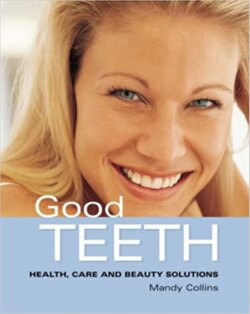Читать книгу Good Teeth - Mandy Collins - Страница 12
На сайте Литреса книга снята с продажи.
Mouthwashes
ОглавлениеWhile brushing and flossing are the cornerstones of good oral hygiene, a mouthwash is a useful addition to your tooth-cleaning regimen. Rinsing your mouth out thoroughly can help to prevent bacteria from accumulating there, causing gum disease and other oral infections.
Often, an antibacterial mouthwash gets into places your toothbrush and dental floss can’t reach. Some can even loosen plaque, while most at least give you a fresh-smelling breath. Mouthwashes vary in flavour and effectiveness, and some even treat mild throat infections, although these are best used only when you need them. If you want to use a mouthwash, find one that offers anti-bacterial properties and has a flavour you are able to face day after day.
Flossing
Flossing is one of those areas where many of us need improvement. It can seem like too much of an effort to floss when all you want to do is brush your teeth and fall into bed at the end of a long day.
Flossing, however, is one of the most common and effective ways of getting rid of plaque and food debris between your teeth; that’s why your dentist or oral hygienist flosses your teeth at every visit.
There are many kinds of dental floss on the market, so if you are at a loss as to which one to use, consult your dentist, or try a few different brands until you find one that works well for your teeth. Also ensure you are using the correct technique, as flossing incorrectly can actually damage your teeth. Again, your dentist or oral hygienist can help you here, and demonstrate correct techniques if necessary. Here’s a basic guide:
Cut off a good length of dental floss, about 50cm (20in), and twist it around the middle or index fingers of both your hands, so that you have about 10cm (4in) of floss pulled tightly between your hands (A). Supporting the floss with your index fingers or thumbs, guide it between the teeth, and use a gentle sawing motion to move it back and forth from the base of the tooth to its crown (B). Take care when pulling the floss: use your other teeth to support your fingers as you can cut your gums if your hand slips.
It’s vital that when you insert the floss between your teeth you curve it into an arc around one tooth, which you clean thoroughly, and then clean the adjoining surface of the adjacent tooth (C). Don’t simply place the floss between your teeth and slide it to and fro. You need to ensure you clean each tooth individually.
